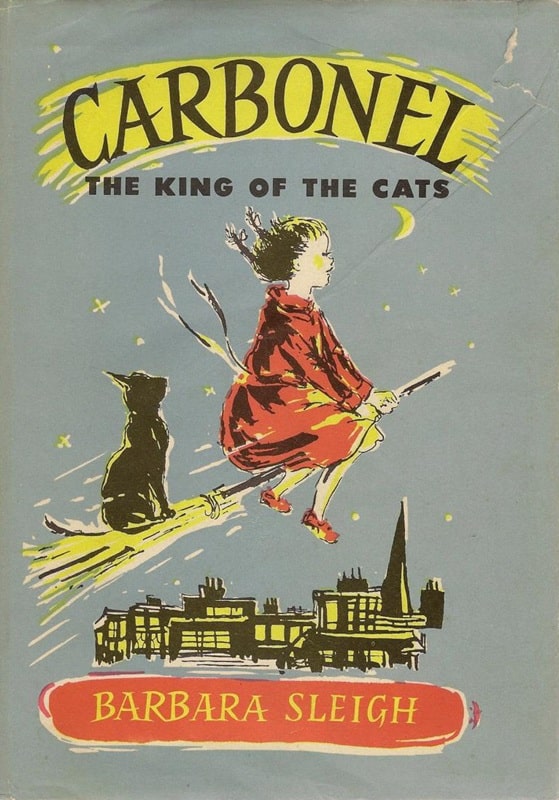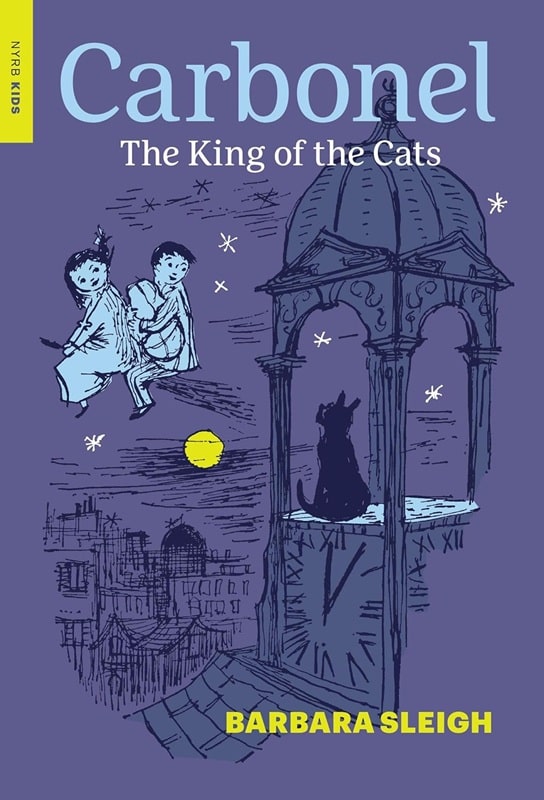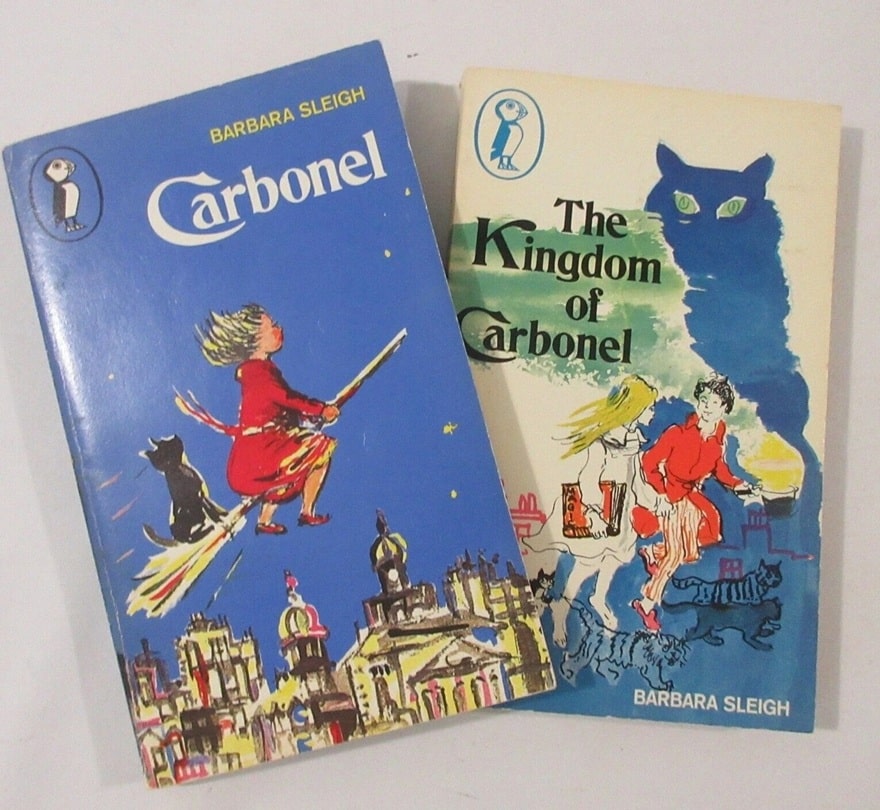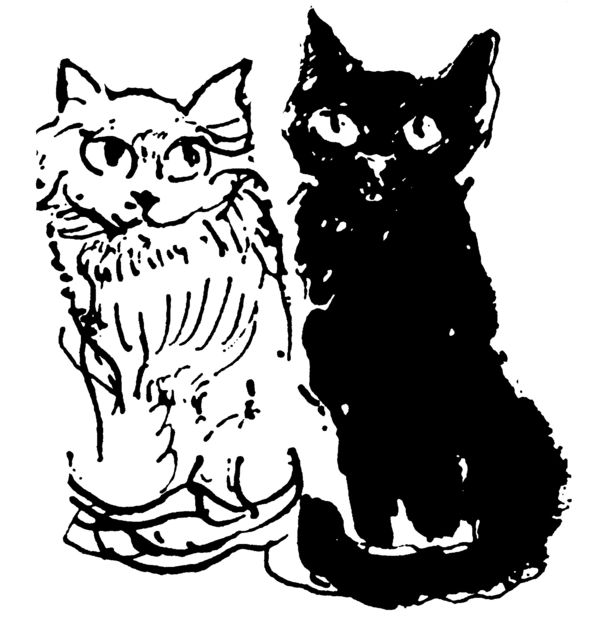A Kind Heart and the Right Sort of Hands: Carbonel, the King of the Cats by Barbara Sleigh

Over the past few years, I’ve started tracking down books I read as a child and still remember, to see what I think of them now. Some of them I’ve had to buy; but I live close to a university library, which still has others on its shelves. I just reread Barbara Sleigh’s Carbonel, the King of the Cats (illustrated by V.H. Drummond), originally published 1955, and enjoyed it enough to think it deserves a review.
Sleigh was clearly an aelurophile; this book is dedicated to one cat and to the shades of four others. I’m pleased that its feline hero, Carbonel, is a black cat (as his name suggests!) — a breed that doesn’t get as much love as it deserves. He has very convincing catlike manners, mixing condescension, sarcasm, and occasional affection. At the same time, he fits one of the classic story formulas, being a lost heir of royal birth, with a title that he hopes to reclaim.

But the novel’s other hero is human: Rosemary Brown, a girl of ten, the daughter of a widow who supplements her pension by working as a seamstress. (Given the novel’s publication date, Rosemary’s father may well have died in the Second World War.) This is another classic formula, the child growing up under straitened circumstances — one that was still with us in Harry Potter and the Philosopher’s Stone (a much better title than the American Sorcerer’s Stone).
I have to say that Rosemary is more enterprising than Harry: When her vacation from school begins, she comes up with the idea of finding some sort of work to earn money at, in order to help her mother. (Though to be fair, there might have been far fewer obstacles to such a project in 1955 than in 1997.)

In any case, that’s where the adventure begins: Rosemary decides that she could earn something by cleaning and sets out to buy a broom with the contents of her money box. As it turns out, what she gets is a witch’s broom, and one that’s crudely made, with a bundle of twigs at the sweeping end, and on the verge of falling apart.
But she also gets the witch’s cat, with her last three farthing, and learns that the broom not only flies, but grants her the power to understand what the cat says to her. Unfortunately, it’s not suited for the kind of indoor cleaning Rosemary has in mind: It looks more like a gardener’s broom.

But Carbonel, the cat, brings his own complications: He’s still bound by a spell the witch cast on him, and can’t reclaim his heritage and give the feline kingdom a proper ruler until he’s set free. And the conditions for doing so entangle Rosemary and her newly made friend John (the nephew of one of her mother’s customers) in a long series of complications.
I thought they were ingeniously worked out and had just the kind of odd magical prohibitions that are proper to a fairy story; and the resolution of Sleigh’s plot also resolves several other issues that came up earlier, from a small theatrical troupe’s troubles to the career of a retired witch. I really thought this book showed a lot of ingenuity in tying everything together.

I was also struck by a point I missed when I read this as a child, because of the other things I hadn’t read: In one chapter John figures out something significant and cites a maxim of Sherlock Holmes’s to explain how he did it — one from “A Scandal in Bohemia,” the story that gave us Irene Adler. I don’t know if I would have understood a story about royal love affairs and potential blackmail when I was 10, and perhaps John doesn’t, either. But clearly at least part of the story stayed with him.
Sleigh does a good job both of making the reader sympathize with Rosemary, and through Rosemary’s own sympathy of making the reader sympathize with Carbonel. Both of them were entertaining characters, and they made me feel that my private project is being worthwhile.
William H. Stoddard is a professional copy editor specializing in scholarly and scientific publications. As a secondary career, he has written more than two dozen books for Steve Jackson Games, starting in 2000 with GURPS Steampunk. He lives in Lawrence, Kansas with his wife, their cat (a ginger tabby), and a hundred shelf feet of books, including large amounts of science fiction, fantasy, and graphic novels. His last article for us was a review of Dorsai! by Gordon Dickson.
What a delightful-sounding story! It also sounds like the long-form sort of children’s book, the style of which is largely lost among today’s authors, the form that Nesbitt and Eager subscribed to.
I’d never heard of this book, before, but if it used to be widely read, that answers questions I had as to why the sudden prevalence of kings of cats, courts of cats, and cats as viewpoint characters, starting about thirty years ago and continuing today. I suppose that those influenced by the book started coming of publishing age about then, and the ones continuing the tradition have been influenced by those. Knew it couldn’t have been just “Old Possum’s Book of Practical Cats!”
I must say I cherish “Old Possum,” which to my mind might be Eliot’s most lasting literary achievement. (My wife is a fan too; that’s why our current cat is named “Macavity”!) But I don’t think it would have had that sort of influence, both on chronological grounds (it would have been felt earlier) and because it’s a different sort of content: Eliot’s cats include clubbable gentlemen, criminal masterminds, pirates, seductresses, and a transgender magician, but no kings! “Old Possum” is a collection of comedic vignettes, but Carbonel is an adventure story.
You have a Macavity? Purrfect. ^_^ I’ve never had a Macavity, but I have definitely had cats whose second names ought to have been like Jennyanydots and Rumpleteazer. Can’t get a read on my current cat, who sometimes seems like a Bustopher Jones, sometimes like a Skimbleshanks. (My parrot is of the belief that it was a travesty when Weber stopped doing his “The Ballad of Billy McCaw” in English, but otherwise holds no opinion on any cats, practical or otherwise.)
You’ve sold me on adding “Carbonel” to my to-be-read list. In your opinion, is it worth seeking out the sequel as well? Or would you recommend just starting with the first book?
I myself have not sought out the sequel. I don’t think the city library had it when I was a child; I have no memory of having read it, and indeed was surprised to learn of its existence. I’ll have to see if the university library has it on their shelves.
Just ran a “Carbonel” search on AbeBooks, and it brought up a third title, as well: “Carbonel and Calidor.” Is Calidor a recurring character, do you know?
TBR pile keeps growing, just as I’d made inroads on its size… delicious sort of problem to have.